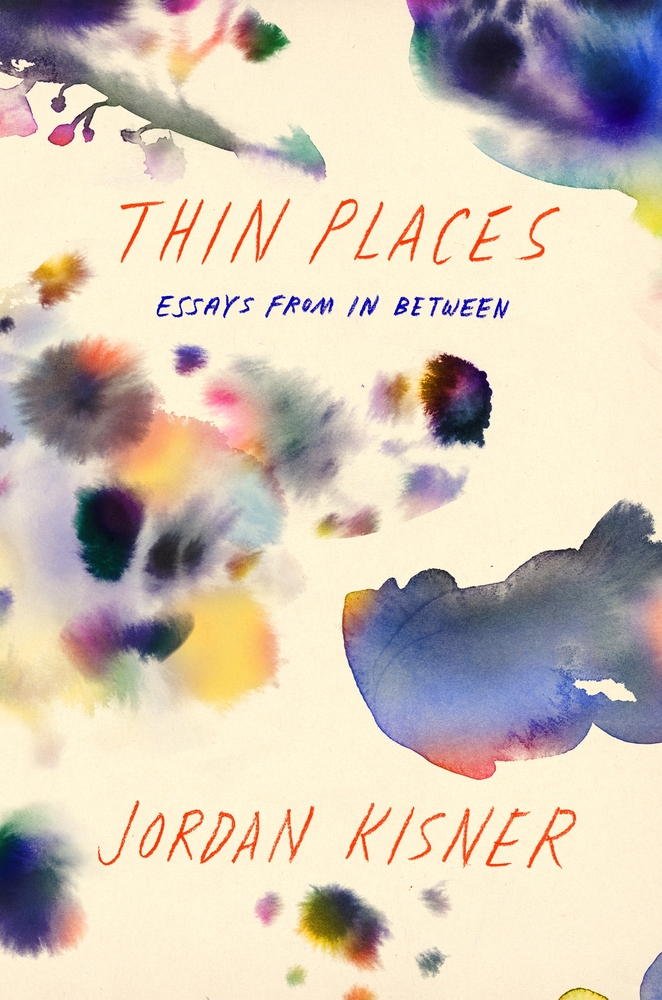Thin Places, “The In Between” Ways of Being, are the Focus of Jordan Kisner’s Collection of Essays

Author: Sarah Sarai
March 18, 2020
Thin places, “the in between” ways of being, are the focus of Jordan Kisner’s debut collection of thirteen essays. A Celtic phrase, thin places describes a space “where the barrier between the physical world and the spiritual world wears thin and becomes porous.” Kisner prefers thin places. A melting pot-American, she doesn’t want to pass “as white or Mexican, religious or agnostic, gay or straight, or anything else.” As public definitions of identity relax, are challenged, and at least not in-hiding as a matter of routine, a look at this matrix of fluidity and perception is welcome.
In the title essay, Kisner, who is OCD, finds commonality with those similarly diagnosed: “I was not surprised, even a little, to discover another person with OCD who’d been worrying his whole life about the distinctions and correspondences between himself and other people, and between himself and God.” Way back, only the study of Demonology afforded a vocabulary for explaining compulsion, while obsession “was understood as a torment of the soul.” The very old-school cure was exorcism. Now a procedure called “neurosurgical transversal for OCD” is an option. But more to the point, from thin paces we develop our perspective of the world.
Robocalls offer another springboard. In “Phone Calls from the Apocalypse,” Kisner hopes to discourage these come-ons and picks up, but instead of the usual spiel about car insurance or carpeting she hears a recorded voice with the Hellfire diction of a Pentecostal preacher. “First they deceived you, then they oppressed you.” As instructed, Kisner presses “the numerical button one” but is disconnected. The calls keep coming, each from a different city in California, each with “scripts formulated as a warning.” Kisner interprets the contemporary rage these admonitions target:
This is the era of being ‘robbed,’ the year of the con artist, the time of everyone losing out to someone else. Immigrants are coming to take your jobs . . . trans people are coming to take your bathrooms…
None of us are getting our due (we believe). Out of a thin place, a moan is heard.
Coming out was a surprise to Kisner, who dated a guy for five years and didn’t think much about it. Each coming out story is different, of course. Some are without support of family. Some know they’re loved. Some choose to blend in, not from fear (although we all know the fear), but because fluidity is their thing. Kisner believes that:
Life is marked by rapid and unanticipated moments of reversal. You believe in God and then you do not, and vice versa; you feel safe until you do not; you are well until you are not; you are humming along vaguely bored by your life and then you’re in love, and everything, even you, looks different.
One day she’s with a handsome fellow, the next she’s in bed with a woman who cries out, “You’re gay! Oh my god, you’re gay!” All this in “Backward Miracle,” an essay on skin – that porous border, and Olive Oatman, “the first American white woman with tattoos.” (Which seems a big statement, hard to document, but, okay.) While trekking to Utah with her Mormon family, Oatman was taken by the Yavapi, and then the Mojave. After some years, the Mojave tattooed her as “an acknowledgment that [her] soul had become permanently Mojave.” Reassignment describes more than gender. “Not only did she reassign her soul’s destination from a Mormon celestial kingdom to a Mojave Land of the Dead; she reassigned herself in life.” When white folk ‘saved’ Olive in 1858, she was nineteen and now consigned to a between-world of mixed culture; a forever-after awkward white-life in which she was a curiosity with a tattooed chin. With respect to Oatman’s tale, Kisner muses about her own experience with appearing “vaguely pansexual;” also with searching out tattoos. Given the intensity of Oatman’s life I’m not convinced that Kisner, or any of us, can justify comparing our life with hers, but Kisner lives eyes-wide-open: “I watched other people who were stuck in between one world and another.”
Reading Thin Places I was reminded of Oliver Saks’ elucidating essays, which unfold in the maze of existence. Jordan Kisner’s essays from in between also escort us on an informed and elegant journey. See for yourself.
Thin Places: Essays From In Between
By Jordan Kisner
Farrar, Straus and Giroux
Hardcover, 9780374274641, 272 pp.
March 2020


